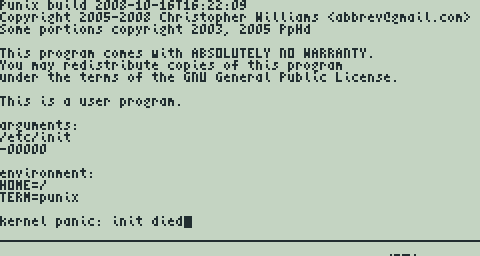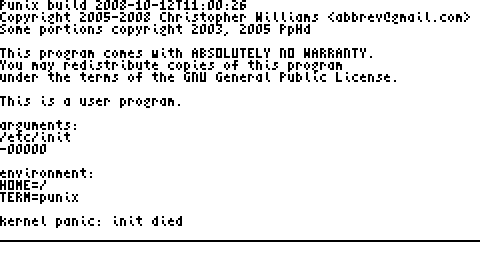This one demonstrates some escape codes for clearing parts of the current line or screen:
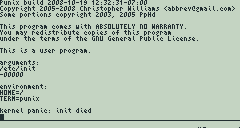
This demonstrates scrolling the screen up and down:

This demonstrates the use of the graphics character set, invoked with the Shift In (SI) character, or Ctrl-N:
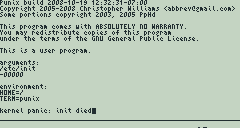
This last screenshot demonstrates the compose key feature, which is similar to Multi_key in X:
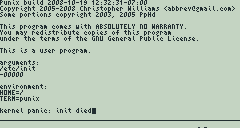
Currently the driver uses the MODE key as the compose key, as that was one of the few obvious choices for this function. The digraphs I used in the demo are as follows:
| Digraph | Resulting character |
|---|---|
| U' | Ü |
| ^0 | ° |
| 12 | ½ |
| ss | ß |
| L- | £ |
| xo | ¤ |
| so | § |
Update 2008-11-18: I added a tag named "vtdemo" in the Subversion repository for this revision, so you can check it out and play with it using the command svn co https://punix.svn.sourceforge.net/svnroot/punix/tags/vtdemo
